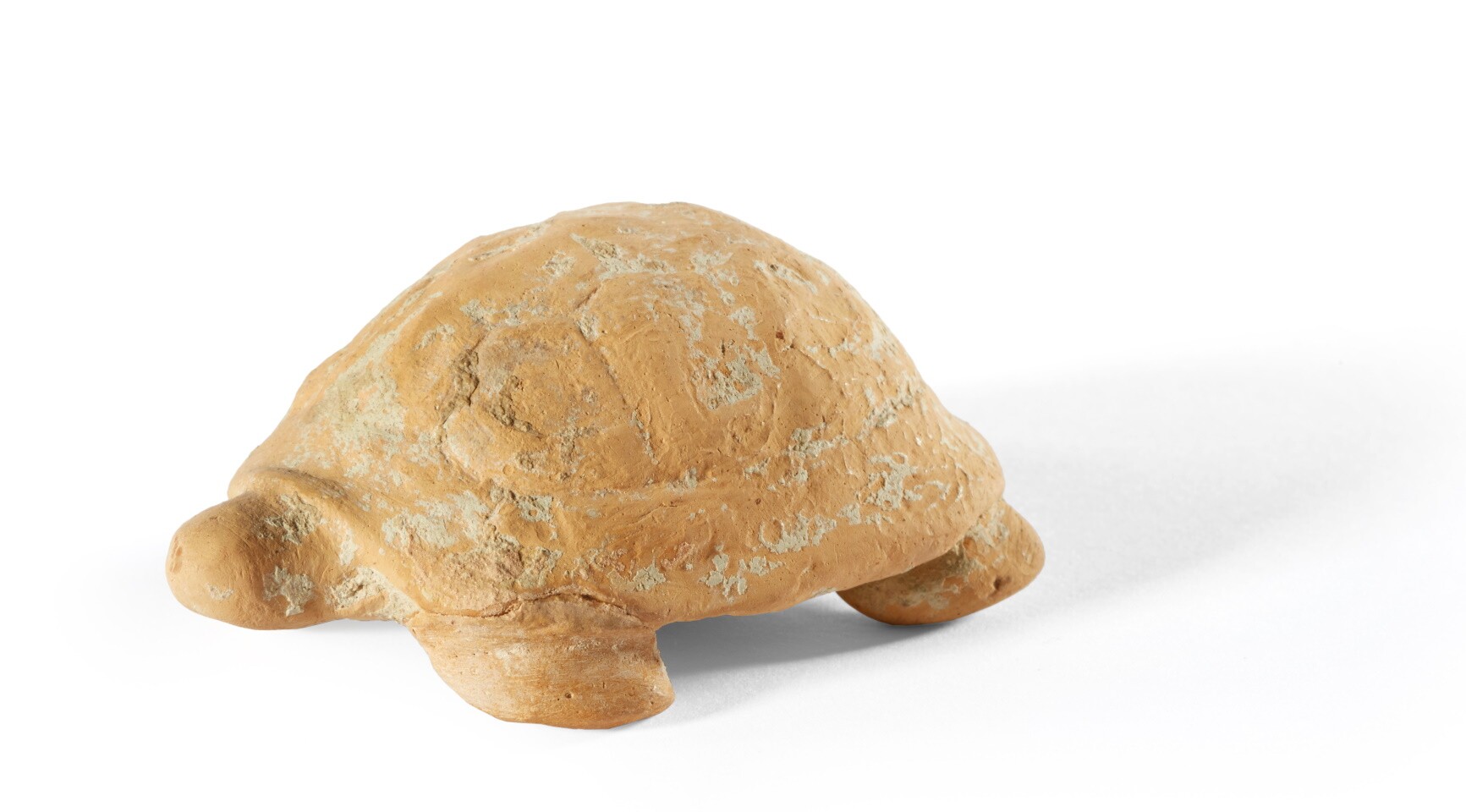Animal figurines were very common in the 5th century BC. They represent votive gifts to the gods or funerary offerings.
The tortoise is often associated with Hermes in his function as shepherd god, as he is said to have invented the lyre from the tortoise shell. But this reptile is also associated with Apollo, who is known as a gifted lyre player. Among other things, Aphrodite is symbolised by the tortoise. According to Pausanias, it was also sacred to Pan (Paus. 8,54,7).
Models for this small turtle can be found in Rhodian models.
Former collection Erhart Kästner, Wolfenbüttel
Translated with www.DeepL.com/Translator (free version)
en
















